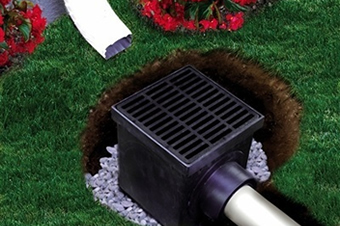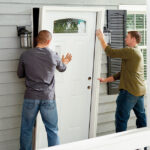Drainage issues can wreak havoc on your property, leading to flooding, erosion, and damage to structures and landscaping. It’s essential to visit this site to learn about effective drainage solutions that can protect your home and enhance your outdoor spaces to get visit this site.
Introduction to Drainage Issues
Common Drainage Problems Faced by Homeowners
Many homeowners experience drainage issues such as flooding, pooling water, and soil erosion, especially in low-lying or poorly graded areas of their property. These problems can cause damage to landscaping, compromise the integrity of structures, and create safety hazards.
Importance of Addressing Drainage Issues Promptly
Ignoring drainage problems can lead to costly property damage and structural issues. By addressing drainage issues promptly, homeowners can prevent water damage, improve safety, and make their outdoor spaces more usable and enjoyable.
Types of Drainage Solutions
Surface Drainage Systems
Surface drainage systems, such as French drains, surface swales, and trench drains, are designed to divert and manage surface water runoff effectively. These systems are ideal for controlling rainwater and preventing surface flooding.
Subsurface Drainage Systems
Subsurface drainage systems, including drainage tiles, perforated pipes, and catch basins, are used to control groundwater and soil moisture. These systems are installed beneath the ground surface to collect and redirect water away from the property.
Grading and Landscaping Techniques
Grading and landscaping techniques involve adjusting the slope of the land, contouring the terrain, and implementing natural methods to redirect water flow. These techniques help prevent erosion, manage surface runoff, and improve soil stability.
Assessing Drainage Needs
Site Evaluation and Analysis
To determine the most effective drainage solutions for your property, it’s essential to conduct a thorough site evaluation and analysis. This involves identifying problem areas, assessing drainage patterns, and examining soil type, topography, and vegetation.
Consulting with Drainage Experts
Seeking advice from drainage experts, such as professional landscapers or drainage contractors, can provide valuable insights into suitable drainage solutions for your property. These experts can offer recommendations based on their knowledge and experience.
Budgeting and Planning Considerations
Before implementing drainage solutions, it’s important to budget and plan accordingly. Estimate project costs, allocate resources, and develop a timeline for completing drainage projects. Prioritize projects based on urgency and budget constraints.
Implementing Drainage Solutions
Selection of Appropriate Drainage Systems
Choose the right combination of surface and subsurface drainage systems based on your property’s specific needs and conditions. Consider factors such as soil type, topography, and the extent of the drainage problem.
Installation Process
Proper installation of drainage systems is essential for ensuring their effectiveness and longevity. Follow correct excavation, trenching, and placement techniques, and use high-quality materials for sealing, backfilling, and compaction.
Maintenance and Monitoring
Regular maintenance and monitoring of drainage systems are crucial for optimal performance. Inspect and clean drainage components periodically, and make adjustments or repairs as needed to prevent clogs, blockages, or system failures.
Benefits of Effective Drainage Solutions
Protection of Property and Landscaping
Effective drainage solutions protect buildings, foundations, and landscaping from water damage, preserving their structural integrity and aesthetic appeal.
Enhancement of Outdoor Living Spaces
By eliminating standing water and reducing safety hazards, drainage solutions create usable, functional outdoor areas where homeowners can relax and entertain.
Long-Term Cost Savings
Investing in drainage solutions can save homeowners money in the long run by minimizing repair and replacement costs associated with water damage and erosion. Additionally, improved drainage can increase property value and curb appeal.
In conclusion, effective drainage solutions are essential for preserving property, protecting landscaping, and enhancing outdoor living spaces. By understanding the types of drainage systems available, assessing drainage needs, and implementing appropriate solutions, homeowners can mitigate drainage issues and enjoy a healthier, more resilient landscape.



